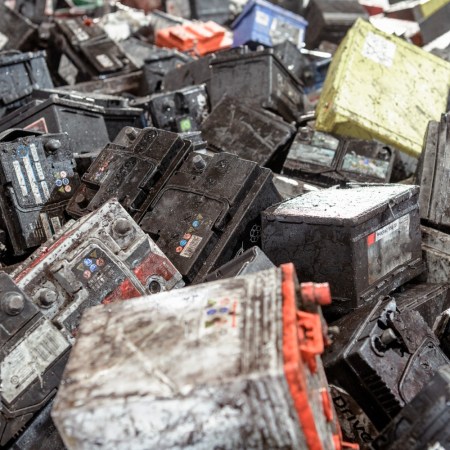In the age of so-called “fake news,” the line between what’s real and what’s not has become inscrutable.
But between threats to our country’s most treasured wilds, the continued degradation of natural resources and roundly pilloried environmental policy rollbacks, we know this much is true:
Our planet is in trouble, and the stakes could not be any higher.
Who wants to argue otherwise? Many, unfortunately. While everyone has an opinion on what the Trump administration has done right or wrong over a tumultuous first half-term, its stance on the environment could not be more universal: inaction. From the initial easing of offshore drilling rules and Trump’s decision to abandon the Paris climate change agreement, to the thuggish appointment of the Environmental Protection Agency’s top job to oil industry lap dog Scott Pruitt, we’ve come to track failures instead of advancements.
If you’re feeling utterly lost, you’re not alone. What’s important to remember is that environmental progress is not a zero-sum game.
With that in mind, we spoke with four thought leaders to take their pulse on what it means to collectively fight for the planet.
Here’s what we learned.
Ron Hunter
Environmental Activism Manager, Patagonia
By offering the country’s most extensive clothing recycle program and challenging the sustainability of its global supply chains, Patagonia has proven time and again that outdoor recreation is a privilege, not a right. And no one knows this better than Ron Hunter, Patagonia’s longtime activism chief. Most recently, he led the outdoor label in rattling some cages with its audacious “The President Stole Your Land” campaign in response to President Trump’s plans to rollback protection status of Utah’s Bear Ears and Grand Staircase-Escalante National Monuments.
InsideHook: What lessons has Patagonia learned since launching “The President Stole Your Land” campaign?
Ron Hunter: The bottom line in this battle is that this administration’s actions are both unprecedented and illegal. What wasn’t explained in December, and only came to light with the release of thousands of pages of documents, was that the decision to reduce Bears Ears and Grand Staircase National Monuments by nearly two million acres was nothing more than a political favor to extractive industries [Ed. note: read more here]. Americans overwhelmingly support the protection of public lands, yet the only opinions that seem to matter are the ones that profit from these extraordinary wild places. So now the real fight begins, and we’re committed to seeing it to the end.
IH: What do these public lands mean to Patagonia? What exactly are we protecting?
RH: Protected lands and conservation areas bring Americans together, strengthen bonds with friends and family and support a strong recreational economy across the country. Defending our national monuments (and other protected public lands) from reduced and weakened protection will result in stronger rural and urban communities, flourishing local economies and healthier wildlife populations.
IH: Beyond fighting for protected lands, Patagonia has always been known for its social commitment to the environment. What are some other ways the brand is taking action?
RH: The list is long, both from a conservation perspective and from a getting-our-own-house-in-order one. Legacy conservation issues include protecting the Arctic Refuge, dam removal and proactive wilderness protection. And that’s just in the U.S. Our colleagues in Europe, Japan, South America, Canada and Australia face their own challenges when it comes to protecting wild rivers, stopping extractive industries from destroying pristine habitat and promoting renewable energy. On the internal side of things, we scaled important programs like Fair Trade Certified and Worn Wear to create a bigger positive impact and went full throttle into regenerative organic agriculture.
IH: What is your advice to like-minded folks who do not have the power to take political action, but want to help any way they can?
RH: First, support small grassroots environmental groups (or in the case of Bear Ears — tribal groups) with a donation. Many of these groups work on a shoestring budget and every bit of support goes a long way. Secondly, contact your elected officials and let them know how you feel about protecting public lands. Phone, email, write a letter or make an appointment at their local office — it doesn’t matter. What matters is they hear from you. And third, and perhaps the most important: VOTE! And vote with the environment in mind. Vote for candidates who support the protection of our public lands now, and for future generations.
Dune Ives
Executive Director, Lonely Whale
At Lonely Whale — the oceanic conservation incubator backed by Adrian Grenier — Executive Director Dune Ives leads action-based ocean conservation initiatives that connect the worlds of NGOs, influencers, corporations and policymakers for comprehensive impact. Lonely Whale’s latest initiative, For a Strawless Ocean, is a social call-to-action for a plastic-free ocean.
InsideHook: What are some of the biggest challenges facing our oceans today?
Dune Ives: Plastic pollution, deoxygenation and overfishing. Sadly, every one of these is a result of our lack of understanding that the ocean is our most important life support system. We’ve chosen to focus our efforts on solving what we believe to be the most tangible, universally relevant and solvable of these issues: plastic pollution. It is estimated that annually between 8 and 12 million metric tons of plastic enters the ocean, and scientists project that by 2050, there will be more plastic in the ocean than fish by weight [Ed. note: read more here]. As individuals, we encounter plastics on a daily basis — in straws, stir sticks, cutlery, coffee lids, water bottles, bags, packaging and shipping materials. Single-use plastic is literally staring us down every day, yet we fail to take action.
IH: What are some effective ways you’ve found of making people understand the severity and urgency of water pollution?
DI: One of the issues with the marine environment is that it’s inaccessible for the vast majority of us. Recognizing that, we take a tactic like a brand might: to “sell” the ocean in order to save it. By thinking and talking like a brand, we can build stronger and more impactful campaigns that speak to the hearts and minds of individuals and also create an affinity for a healthy ocean. When considering plastic pollution, for example, we knew we had to find a low barrier to entry for the average person who wanted to get involved. By focusing on the plastic straw, a ubiquitous item we encounter multiple times a day, we could ask the public to do one simple thing: Stop Sucking. Quite honestly, it was successful in creating and amplifying a global movement because, well, it’s funny, and surprising, and enables everyone to participate how they want to engage.
IH: Part of your mission is “market-based solutions.” What are some ways businesses are leading change, and how does that compare to individual action?
DI: We’re firm believers that the market leads the way. While policy change can be impactful, it requires the market to demonstrate it is supportive of and ready for change. And sadly, policy isn’t typically accompanied with the right level of resources needed to ensure full implementation at the local level, so market-based solutions are the only way forward. This is the time for market innovation, accompanied by commitments from businesses to curb their waste.
IH: What lessons have you learned working alongside industry and commerce to affect action?
DI: The conversation of ocean health has space for everyone, and it doesn’t have to require a significant investment. We’ve been so inspired by industry and business leaders who have tackled this issue head on. Dell — a global tech giant with no obvious or direct relationship to the ocean — realized that their technology, talent and resources can help to shift the conversation around ocean health and marine litter. Their willingness to get involved spearheaded our NextWave initiative and has since inspired other companies to commit to joining the effort.
IH: Finally, what’s the best thing individual people can do to stop marine pollution?
DI: Firstly, #StopSucking. Give up plastic straws because it’s easy, simple and powerful. If you do need a straw, choose a marine-friendly alternative like paper. Secondly, become conscious of your purchasing power and your dependence on single-use plastics. Support the brands that are making impactful commitments on behalf of our ocean. Lastly, invite a friend to join you in your quest to create and protect a healthy ocean.
Nadia Nazar
Founding Member and Art Director, Zero Hour
As a founding member of Zero Hour, the national movement mobilizing youth organizers around climate and environmental justice, 16-year-old Nadia Nazar is just one of the thousands of young activists who have found a voice in the Trump era. The teen-led Zero Hour Youth Climate March is scheduled for July 21 in Washington, D.C.
InsideHook: Zero Hour, with nonprofit Our Children’s Trust, is taking legal action against the government for not doing enough to confront climate change. For many people, that’s a new way of thinking about climate justice. Can you talk about the lobbying and other actions that will happen at the march?
Nadia Nazar: Zero Hour is organizing a Youth Climate Weekend, which will culminate with the march. On July 19th, youth across the country will lobby their representatives and senators. There will also be a more fun, interactive day of activism on July 20th with art builds, an art gallery and workshops. And on Saturday, July 21st, we march!
IH: What lessons have you learned working with older activists who are assisting Zero Hour? And what do you think they have learned from you and other young organizers?
NN: Working with older activists has made me more mature and confident. They’ve really guided us well, and they continue to do so, in a way that young people on the team are independent. The adults have really respected that this is a youth-led movement and that we need to be the ones with more influence. That respect has allowed me to make major decisions on my own. On the other hand, I think working with youth has been an interesting experience for the adults. The adults have learned more about intersectionality and how that plays a major role in environmentalism.
IH: Since you designed the Zero Hour logo, can you talk about the message of that design? And what role does art and design play in communicating the group’s message of climate justice?
NN: The message of the Zero Hour logo is that climate change is a problem that needs to be dealt with now. The environment has already been extremely affected, and this is shown by the gray area in the clock. We have lost so much time, and we need to be able to work together to fix the problem before it’s too late. The orange-red area on the clock represents the little time we have left. That sliver of red is hope. Climate change may seem like a doomsday problem, but there is still hope.
IH: What was the moment you realized climate change was a problem? What about the moment you decided to get involved? Have you noticed any commonalities among youth organizers?
NN: I have been an advocate for animal rights for about four years now, and that is what really pushed me to become a climate activist. I became an environmentalist when I was educated about how climate change has endangered so many innocent species. Animals don’t deserve to die due to human influence. From the beginning, the idea has really been something I passionately believe in. Many youth organizers have joined the movement because they are scared for their future, and the future of the people on this planet.
Brian McPeek
Chief Conservation Officer, The Nature Conservancy
As Chief Conservation Officer for the Nature Conservancy — the conservation nonprofit concerned with finding global solutions for protecting Earth’s natural resources — Brian McPeek oversees all major organizational initiatives and development programs across more than 70 countries.
InsideHook: How does the Nature Conservancy’s work differ in countries that take climate and environmental justice seriously versus countries that are rolling back regulations?
BM: While it’s true the world is facing some tough challenges, there’s definitely room for optimism. One of the greatest challenges is food and water security. By 2050, the world’s population will top 10 billion people. So, how do we make sure that people have what they need to survive while preserving what’s left of nature? The good news is that these problems are solvable; but they require changing the way we live and work. The Paris Agreement showed that the world is ready to take action to reduce emissions. Companies are working to increase their sustainable business practices. We’re seeing a slowdown in deforestation that contributes to climate change. And we’re seeing tremendous efforts to protect the world’s oceans.
IH: What lessons have you learned in transitioning from a president who was committed to conservation to one who is skeptical and even actively working against it?
BM: In the U.S., environmental issues just aren’t on the top of the priority list. TNC is disappointed by some of the recent actions of this administration, including announcing the U.S.’s withdrawal from the Paris Agreement, rollbacks of protections for monuments like Bears Ears and Grand Staircase Escalante, and attempts to dismantle long-standing clean air and water protections. We’ve unfortunately lost bipartisan support for environmental protections, some of which have been the hallmarks of our democracy — starting with President Roosevelt and the creation of the National Parks system, to President Nixon and the passage of the Clean Water and Air Acts. We need to look beyond whomever is in office and work hard to build stronger coalitions to address climate change, protect lands and waters, and increase access to clean air and water. The good news is there’s a lot of action at the state and local level, and you see that momentum building from California to New Hampshire to Texas and Kansas.
IH: Since 2000, what are the primary threats the Nature Conservancy has dealt with and triumphed over?
BM: One of the single greatest threats facing people today is climate change. That’s probably not surprising to hear coming from someone who works at an environmental organization. But, this environmental problem has profound effects on overall human well-being. Changes in our climate are resulting in more severe and prolonged droughts and more intense flooding events around the world. Take Cape Town as an example: while the city avoided catastrophe this year, it’s still a city in crisis. According to the United Nations, by 2050, the global demand for fresh water is expected to increase by more than 40% and at least one-quarter of the world’s population will live in countries with a “chronic or recurrent” lack of clean water. This isn’t only happening abroad; we see water scarcity stresses here at home in California, Colorado, Texas and even Massachusetts. But cities are recognizing they have to address these challenges head on. Billions of dollars in revenue have been generated via land and water ballot initiatives across the country and the pace of conservation at the state and local level has increased despite federal inaction. There’s a lot more to be done, but there’s lots to be hopeful for.
IH: Part of modern rhetoric is that conservation is antithetical to capitalism. How does the Nature Conservancy counter that argument?
BM: The question facing us today is “How do you balance the needs of people with nature?” — not just so they can survive, but so they can thrive. We have to figure this out. There’s a lot of encouraging action from business and industry to incorporate the environment into their economic decision-making. There’s exciting growth in green/sustainable investing, innovative financial mechanisms like coral reef insurance are being developed and implemented to protect land and water, and [then you’ve got] instruments like sustainable land and green bonds. And people are increasingly voting for elected officials who get the need to balance economic growth with sustainability, and they are “voting” with their wallets buy purchasing sustainable goods. TNC is doing a lot of work in these areas, and while we have a long way to go, we’re encouraged by the multitude of like-minded people from the business community who understand that we can’t operate in a “business as usual” fashion.
IH: What do you think the relationship is between large-scale nonprofit conservation work and the small-scale actions of individuals (i.e., veganism, composting, not using plastic bags, etc.)?
BM: We need action at all levels, and everyone has a role to play. Small-scale and large-scale work are inextricably linked. I live in Denver. Every day when I turn on the tap, water flows from Colorado River, under the Continental Divide, and to my faucet. When I plug in a lamp, 50% of that energy comes from a coal-fire power plant. When I go to the store and decide what to make for dinner, I might be contributing to deforestation of the Amazon depending on what I choose to buy. Individual actions are inextricably linked to the big issues affecting the planet. We can all increase the awareness of our own footprint and leverage the work of NGOs, governments, and businesses. That is how we’re going to foster change. It all starts and ends with us.
Editor’s note: The conversations have been edited for length and clarity. Additional reporting done by Alex Lauer.
This article appeared in an InsideHook newsletter. Sign up for free to get more on travel, wellness, style, drinking, and culture.
























